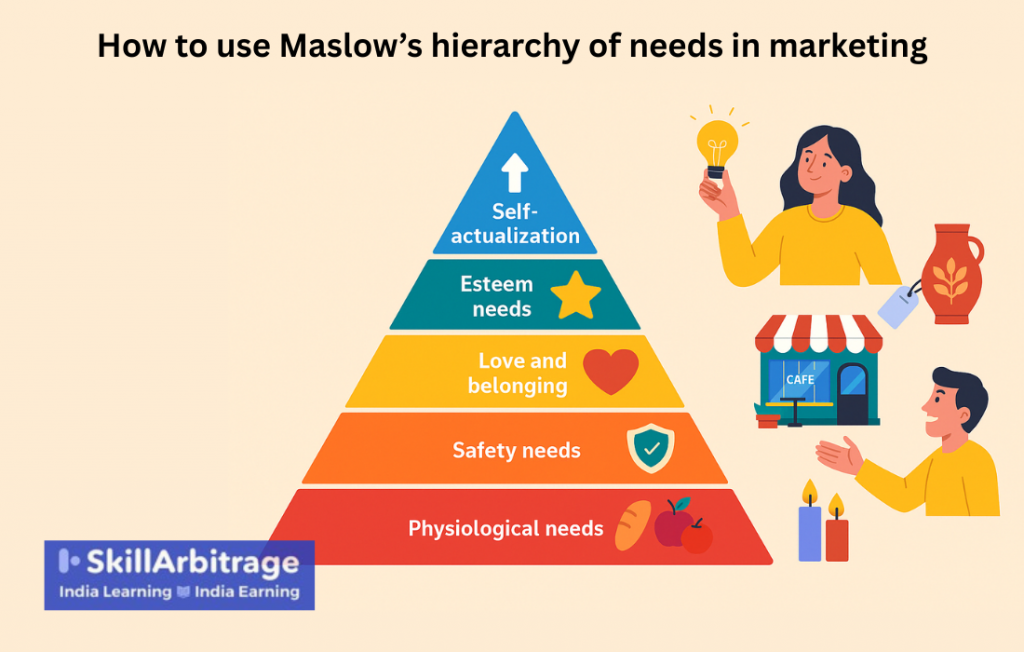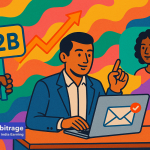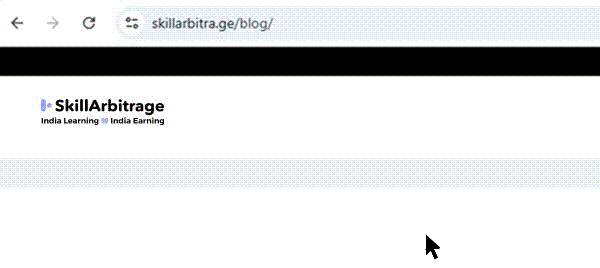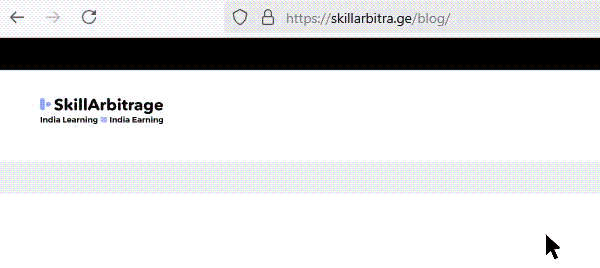This blog explains the use of Maslow’s Hierarchy of Needs in Marketing and gives a step-by-step plan for how even the smallest brands on the smallest budget could do it. use it. It would be useful for content writers, marketing strategists, managers, and startup or SMB owners who want to make their marketing strategies foolproof by backing them up with psychological triggers.
Table of Contents
Introduction
The question constantly plagues every marketing professional, “Why do people buy things?”.
The answer to that is rooted in many factors, including societal conditions and economic trends, like people in a consumerist economy buy much more than those living in an agrarian economy, for example.
One of the most potent reasons is deep human motivation, desire, and needs, this is where the theory of Maslow’s Hierarchy of Needs comes into play.
It is a psychological theory first proposed by the American psychologist Abraham Maslow, in his paper “A Theory of Human Motivation.”, first published in 1943.
The theory is very simple and often depicted as a pyramid with five levels, suggesting that people are motivated to fulfill basic needs before moving on to more advanced ones.
An understanding of it can help any brand leverage psychology to unlock millions of dollars in revenue. Brands like Coca-Cola, Nike, AirBnB all use it to their huge advantage.
And it is possible to do it even for the smallest of brands.
Because at every step, the person can be targeted by marketing messages that resonate deeply and feel extremely personal.
Maslow and marketing
Maslow’s Hierarchy of Needs is a goldmine for marketing because it zeroes in on what motivates people to act, aka buy stuff.
By aligning marketing campaigns with where our target audience sits on the pyramid, we can craft messages that hit their emotional triggers and drive action. Here’s how it plays out across the levels in marketing in terms of triggers and promises:
- Physiological needs
At the base, people need survival essentials—food, water, shelter, health. Marketers target this with products that solve urgent, primal problems.
Think of ads for fast food (“Hungry? Grab this now!”), bottled water (“Stay hydrated anywhere”), or mattresses (“Sleep better tonight”).
The pitch is simple, direct, and tied to immediate relief. For example, Snickers’ “You’re not you when you’re hungry” campaign nails this by positioning their candy bar as a quick fix for a basic need.
- Safety needs
Once survival’s covered, people want security. This includes financial stability, safety, and health protection. This is where insurance companies (“Secure your future”), home security systems (“Protect what matters”), or even skincare brands (“Shield your skin from damage”) shine.
The messaging, in each of these cases, focuses on trust, reliability, and reducing risk.
Volvo’s marketing, for instance, leans hard into safety with slogans like “Designed around you,” making buyers feel protected.
- Love and belongingness needs
People crave connection, so marketers play on relationships and community. This is huge for brands like Coca-Cola (“Share a Coke”) or social platforms like Facebook (“Connect with friends”).
Ads might show happy families, tight-knit friend groups, or romantic moments tied to the product. Dating apps like Tinder market belongingness directly, “Find your match”, while even niche products (e.g., board games) pitch “Bring people together.”
It’s all about making customers feel included or loved.
- Esteem needs
Here, the focus shifts to status, recognition, and self-worth. Luxury brands thrive at this level, think Rolex (“A crown for every achievement”) or Mercedes-Benz (“The best or nothing”).
The messaging screams exclusivity, success, and confidence. But it’s not just high-end stuff; even affordable brands like Nike (“Just Do It”) boost esteem by tying their products to personal achievement and respect.
Customers buy to feel accomplished or admired.
- Self-Actualization Needs
At the top, people want purpose, growth, and to be their best selves. This is where brands get inspirational.
Apple’s “Think Different” campaign appeals to creativity and individuality, while MasterClass markets “Learn from the best” to fuel personal development.
The sell here is something spiritual, like transformation—buy this, become your truest self.
The biggest brands play on these triggers with deft hands.
How the biggest brands use the hierarchy of needs
Psychological needs:
Brand: Gatorade
Their “Is it in you?” campaign focuses on athletes needing hydration and energy to perform. Ads show sweaty, intense moments on the field, with Gatorade positioned as the essential fuel to keep going.
It’s all about meeting that primal need for sustenance during physical exertion—drink this, survive the game. And it is an ode to the sport-loving, competitive male psyche.
Why it works: The campaign targets the base instinct to quench thirst and restore the body, no frills attached.
Safety needs
Brand: Allstate Insurance
The “You’re in good hands” slogan paired with their Mayhem campaign (featuring the chaotic “Mayhem” character causing accidents) highlights protection from life’s unpredictability. They sell peace of mind—your car, home, and family are safe with them.
Why it works: This campaign taps into the fear of loss and the desire for security, making insurance feel like a shield against chaos.
Love and belongingness needs
Brand: Coca-Cola
The “Share a Coke” campaign put people’s names on bottles, encouraging connection, making it more about sharing, belonging and friendship than a simple bottle of soft drink.. Their classic ads often show diverse groups laughing together, tying the product to moments of togetherness and inclusivity.
Why it works: It’s less about the soda and more about fostering relationships, making Coke a symbol of belonging.
Esteem needs
Brand: Rolex
Rolex doesn’t just sell watches; they sell prestige. Their ads feature successful figures like athletes, explorers, and CEOs, and slogans like “Every Rolex tells a story,” linking the product to achievement and recognition. Owning one signals you’ve made it.
Why it works: The campaign feeds the desire for status and respect, both from others and yourself, through luxury and exclusivity.
Self-actualization needs
Brand: Patagonia
Patagonia’s famous “Don’t Buy This Jacket” campaign urged people to rethink consumption and support environmental causes. Their marketing pushes sustainability and purpose, appealing to buyers who want to live meaningfully and contribute to a better world.
Why it works: The campaign aligns the brand with personal growth and a higher calling—buy less, be more.
Multi-level example
Brand: Apple
Apple’s marketing spans the hierarchy. The iPhone meets physiological needs (communication tool), safety (secure data), belongingness (FaceTime with loved ones), esteem (status symbol), and self-actualization (“Think Different” inspires creativity). Their sleek ads and innovation focus make it a masterclass in layered appeals.
The multiple campaigns hit multiple needs at once, broadening its pull across audiences.
None of these brands explicitly say, “We’re using Maslow,” but their strategies clearly map to the hierarchy. They’ve nailed their audience’s motivations, from survival to self-fulfillment.
And going by the revenues and brand image, it worked in each case. So how do you do this to a brand with messaging?
Let’s see what the biggest brands have done till now.
Real-world examples
Brand: A fitness tracker like Fitbit.
Product Analysis: Tracks health (physiological), promotes long-term wellness (safety), connects to fitness communities (belonging), boosts confidence (esteem), and supports personal goals (self-actualization).
Audience Insight: Data shows buyers are mostly 25-40, urban, goal-driven—likely prioritizing esteem (looking fit) or self-actualization (mastering fitness).
Context: Post-pandemic, health awareness is up, but so is self-improvement.
Fit: Lean toward self-actualization (“Unlock your potential”) with a nod to esteem (“Show off your progress”).
Message: Ads feature someone hitting a personal best, smiling at their stats, not just surviving but thriving.
Pro tip
If your brand spans levels, pick the primary fit for your core audience but weave in secondary appeals for broader reach.
For instance, a coffee brand might focus on the physiological (“Wake up fast”) for busy workers but hint at belonging (“Your morning ritual with friends”) for social types.
The best part of this framework and the theory is that it works for both big and small brands.
How the hierarchy of needs works for big and small brands
Maslow’s Hierarchy of Needs is a versatile tool that both small and big brands can use to sharpen their marketing, connect with customers, and stand out. The difference lies in how they apply it.
Small brands leverage agility and niche focus, while big brands use scale and resources.
Here’s how each can benefit, level by level:
Small brands: lean and targeted approach
Small brands often have limited budgets and reach, but they can punch above their weight by zeroing in on specific needs with precision and authenticity.
Physiological needs
Benefit: Small brands can solve basic problems for underserved local or niche markets.
Example: A small bakery offering affordable, fresh bread in a food desert taps into hunger and survival. They build loyalty by being the go-to for essentials.
How: Focus on practicality and accessibility—low prices, simple messaging (“Fresh food, fast”).
Safety needs
Benefit: They can offer personalized security, building trust in tight-knit communities.
Example: A local locksmith promising “24/7 protection for your home” feels more relatable than a faceless chain.
How: Emphasize reliability and human connection—“We’ve got your back.”
Love and belongingness needs
Benefit: Small brands can foster a sense of community that big players struggle to replicate.
Example: A indie coffee shop hosting open mic nights markets “Your spot to belong,” drawing regulars who feel at home.
How: Use social media or events to create a tribe—personal shoutouts, local vibes.
Esteem needs
Benefit: They can cater to niche status-seekers who want unique, non-mainstream cred.
Example: A handmade jewelry startup pitches “One-of-a-kind pieces for the bold,” appealing to customers craving distinction.
How: Highlight exclusivity and craftsmanship—“Not mass-produced, just for you.”
Self-actualization needs
Benefit: Small brands can inspire with purpose-driven missions, often more convincingly than corporate giants.
Example: A sustainable soap maker markets “Clean body, clean planet,” targeting eco-conscious buyers chasing meaning.
How: Tell a founder’s story or tie sales to a cause—authenticity sells here.
Small brand advantage: They’re nimble—able to pivot fast, test ideas, and build grassroots loyalty by nailing one or two levels that resonate with their audience.
Here’s a snapshot to make it clearer.
Big Brands: scale and sophistication
Big brands have the budget, data, and reach to play across multiple levels, crafting polished campaigns that dominate markets and shape perceptions.
Physiological needs
Benefit: They can meet basic needs at scale, becoming household names for essentials.
Example: Walmart’s “Save Money. Live Better.” pushes affordable groceries and goods to millions, locking in the survival angle.
How: Mass distribution and low pricing—“Always there when you need it.”
Safety needs
Benefit: Big brands can invest in trust-building infrastructure and guarantees.
Example: Amazon’s Prime delivery promises “Fast, secure shipping,” easing worries about delays or scams.
How: Leverage brand reputation and tech—think warranties, customer support, or cybersecurity perks.
Love and belongingness needs
Benefit: They can create massive, inclusive communities or tap into cultural moments.
Example: Nike’s “Find Your Greatness” campaigns unite athletes worldwide, making buyers feel part of a global movement.
How: Big-budget ads, sponsorships, or social campaigns—“Join the family” on a grand scale.
Esteem needs
Benefit: They can define status and prestige for the masses, often setting trends.
Example: BMW’s “The Ultimate Driving Machine” screams success and admiration, a badge of honor for drivers.
How: High production values, celebrity endorsements, sleek branding—“Own the best.”
Self-actualization needs
Benefit: Big brands can inspire at scale, linking purchases to global impact or personal transformation.
Example: Tesla’s mission to “Accelerate the world’s transition to sustainable energy” sells cars as a step toward a better self and planet.
How: Visionary messaging, innovation flex, CSR initiatives—“Be part of something bigger.”
Big brand advantage: They can layer appeals across levels (e.g., Apple’s iPhone hits safety, esteem, and self-actualization) and use data to segment audiences, tailoring ads to different needs simultaneously.
Here’s a flow chart for you:
Key differences in application
There are three main differences between how big and small brands use the theory.
Resources: Small brands rely on hustle—local ads, word-of-mouth, personal touch. Big brands throw money at TV spots, influencers, and analytics.
Scope: Small brands win by dominating a niche (one level, one audience). Big brands aim for broad appeal, often juggling multiple levels.
Trust: Small brands build it through intimacy; big brands through consistency and visibility.
Here’s how you can use it for big and small brands
Practical takeaway
Small brands: Pick one or two levels your audience cares about most (e.g., a craft beer brand might hit belonging + esteem—“Drink with friends, feel unique”). Keep it simple, authentic, and community-driven.
Big brands: Use your reach to test and scale across levels, refining with data (e.g., a retailer like Target can push physiological deals and esteem-driven fashion lines).
But in this blog, we will mainly focus on how to use it for small brands.
Application with hypothetical examples for small brands
Step 1: Define your brand and product
- What to do: Write down what your brand offers—its core product or service—and list its key benefits. Be specific.
- How: Ask: “What problem does this solve? How does it make life better?”
- Example: Say you run a small candle business. Benefits might be: affordable light (physiological), cozy ambiance (safety), gifting appeal (belonging/esteem), or eco-friendly materials (self-actualization).
- Goal: Get a rough sense of where you could fit on the hierarchy.
Step 2: Study your audience (on a budget)
- What to do: Figure out your customers’ dominant need using free or low-cost methods.
- How:
- Talk to them: Chat with repeat buyers in person, via email, or DMs—“What do you love about this?”
- Social media: Check comments or posts about your brand (or competitors) on X or Instagram. Look for clues: Are they stressed (safety)? Seeking status (esteem)?
- Sales data: If you’ve sold anything, see what’s popular and why—cheap items might signal physiological, premium ones esteem.
- Quick survey: Use Google Forms (free) and ask 5-10 customers: “What matters most when you buy [product]?”
- Example: Candle buyers rave about “relaxing vibes” (safety) and “perfect gifts” (belonging)—less about “saving the planet” (self-actualization).
- Goal: Pinpoint one or two levels your audience likely sits on.
Step 3: Pick your primary level
- What to do: Match your product’s strongest benefit to your audience’s top need. Don’t overcomplicate it—focus on one level to start.
- How: Cross-reference your list from Step 1 with Step 2 insights. If it’s a tie, choose the lower level (people prioritize basics first).
- Example: Candle audience cares about “cozy ambiance” (safety) over gifting (belonging). You pick safety as the primary hook.
- Goal: Lock in a clear target—e.g., “We’re the safety brand for stressed-out folks.”
Step 4: Craft a simple, targeted message
- What to do: Create a tagline, pitch, or vibe that speaks directly to that need. Keep it short and emotional.
- How: Use words that fit the level:
- Physiological: Urgent, practical (“Light when you need it”).
- Safety: Calm, secure (“Unwind with ease”).
- Belonging: Warm, connective (“Share the glow”).
- Esteem: Bold, empowering (“Shine brighter”).
- Self-Actualization: Inspiring, big-picture (“Burn clean, live green”).
- Example: For safety, you go with “Your cozy escape” for the candles.
- Goal: Make a message that sticks and feels authentic to your brand.
Step 5: Test it cheaply
- What to do: Try your message on a small scale to see if it works.
- How:
- Social media: Post on X or Instagram—“Your cozy escape awaits. $10 candles!”—and track likes, comments, shares.
- Email: Send a quick blast to your list (even if it’s just 20 people) with the pitch. See who clicks or buys.
- In-person: If you sell locally, chat up customers with the new angle—“Need a cozy night?”—and note reactions.
- Example: You post “Your cozy escape” with a candle pic. It gets 50 likes and 5 sales—better than last week’s generic “Handmade candles” post.
- Goal: Get real feedback fast without breaking the bank.
Step 6: Refine based on results
- What to do: Tweak your approach based on what you learn—double down on what works, ditch what doesn’t.
- How:
- If it flops: Revisit Step 3—maybe you picked the wrong level (safety instead of belonging). Test a new angle.
- If it works: Lean in harder—update your website, packaging, or next post with the winning pitch.
- Example: “Cozy escape” sells, but comments mention gifting too. You tweak to “Cozy up or gift the glow,” blending safety and belonging.
- Goal: Hone your Maslow fit until it’s a no-brainer for your audience.
Step 7: Scale it on budget
- What to do: Grow your reach while staying lean—stick to the Maslow level that’s clicking.
- How:
- Free channels: More X posts, local Facebook groups, or flyers with your tagline.
- Low-cost ads: Spend $10-20 on Instagram boosting your best post. Target your audience (e.g., “stressed moms, 25-40”).
- Word of mouth: Ask happy buyers to spread the word—“Tell a friend about your cozy escape!”
- Example: You boost a “Cozy escape” post, get 10 more sales, and ask buyers to tag you in pics. Momentum builds.
- Goal: Grow without losing that personal, Maslow-driven edge.
Small-brand tips
- Start small: Don’t aim for all five levels—master one first.
- Use what you have: Existing customers and free tools (X, Google Forms) are gold.
- Stay flexible: If your audience shifts (e.g., safety to esteem), pivot fast—you’re small enough to do it.
- Keep it real: Don’t oversell (e.g., “Candles change your life!”) if you can’t deliver—stick to what’s true.
Let’s see if it translates across product categories. Let’s take a packaged water brand (fulfills basic needs), a soft drink brand (fulfills love and belongingness needs), and a luxury car brand (fulfills esteem needs).
Packaged water (Basic necessity product)
Primary Maslow Level: Physiological → Safety
Luxury car (Status & esteem product)
Primary Maslow Level: Esteem → Self-Actualization
Goal: Sell prestige, identity, and personal success
3. Soft drink brand (Belonging & fun product)
Primary Maslow Level: Love/Belonging → Esteem
Goal: Sell shared moments, identity, and coolness
Here’s a quick comparison
Now, is that not easy?
Although the theory of needs seems like a perfect solution to write failsafe copy at times. It is not without its own set of challenges.
Challenges and how to mitigate them
Using Maslow’s Hierarchy of Needs in marketing is powerful, but it has some common roadblocks.]Both small and big brands can stumble if they don’t navigate the framework carefully.
Here are the key hurdles and why they matter:
1. Misidentifying the audience’s need
- Challenge: Guessing wrong about where your customers sit on the pyramid can tank your campaign. If you pitch self-actualization (“Fulfill your potential”) to people struggling with physiological needs (“I just need food”), they’ll tune out.
People’s needs shift, economic downturns push folks toward safety, while good times lift them to esteem or beyond. Small brands might lack data to spot this; big brands might overgeneralize diverse audiences.
- Example: A luxury spa pushing “Inner peace” (self-actualization) during a recession might flop if customers are stuck on safety (saving money).
2. Overlapping or conflicting appeals
- Challenge: Many products fit multiple levels, but leaning too hard on the wrong one—or muddling the message—confuses buyers. A car could sell safety (“reliable brakes”) or esteem (“sleek design”), but blending them poorly dilutes impact.
Small brands might overreach with limited messaging space; big brands might overcomplicate with too many angles.
- Example: A fitness app pitching “Track your health” (physiological) and “Be your best self” (self-actualization) in one ad might leave users unsure of the core benefit.
3. Authenticity and overreach
- Challenge: If your brand’s promise doesn’t match its reality, customers smell inauthenticity. A cheap gadget claiming “Transform your life” (self-actualization) feels hollow but the same gadget saying “Stay healthy” might work.
Small brands might exaggerate to compete; big brands might push lofty ideals that clash with their corporate rep (e.g., oil companies going “green”).
- Example: Fast fashion preaching “Sustainable living” (self-actualization) gets backlash if their supply chain screams exploitation.
4. Cultural and individual variation
- Challenge: Maslow’s model assumes universal needs, but priorities differ across cultures, demographics, and personalities. Belonging might trump esteem in collectivist societies; some people never chase self-actualization.
Small brands might miss this in local markets; big brands struggle globally without tailoring.
- Example: A U.S.-based brand pushing esteem (“Stand out!”) in Japan might flop where fitting in (belonging) matters more.
5. Resource constraints
- Challenge: Pinpointing and targeting a need takes time, research, and testing—things small brands often can’t afford. They might default to generic messaging instead of a sharp Maslow fit.
No budget for surveys or analytics means relying on gut, which can miss the mark.
- Example: A small candle maker guessing “Cozy vibes” (safety) might overlook customers buying for “Gift status” (esteem).
6. Execution scale
- Challenge: Big brands can nail the theory but fumble the rollout—too many cooks, diluted focus, or overproduced ads that lose soul.
Bureaucracy and chasing mass appeal can water down a clear Maslow hook.
- Example: A global soda brand’s “Connect with friends” (belonging) ad might feel forced if it’s just shiny CGI with no heart.
7. Measuring success
- Challenge: Linking a campaign’s impact to a specific need isn’t always clear-cut. Did sales spike because you hit safety or because of a random trend?
Small brands lack robust tracking; big brands drown in data but struggle to isolate Maslow’s role.
- Example: A gym sees sign-ups rise after a “Feel secure in your health” push (safety)—was it the message or a New Year’s resolution bump?
8. Evolving needs over time
- Challenge: Customers move up (or down) the hierarchy, and brands must keep up. A safety-focused brand might lose relevance if its audience shifts to esteem.
Small brands might not notice the shift; big brands might be slow to pivot entrenched strategies.
- Example: A budget phone brand thriving on “Stay connected” (physiological) could stagnate if buyers start wanting “Cool tech” (esteem).
But like any challenge, in life or marketing, these too can be overcome
Overcoming the challenges
- Research: Dig into your audience—surveys, X posts, or sales patterns—to confirm their level. Small brands can lean on free tools; big brands can tap analytics teams.
- Focus: Pick one primary need and nail it, even if you nod to others. Clarity beats clutter.
- Test: Run small campaigns to see what resonates—tweak based on real feedback.
- Stay Real: Align your pitch with what you can deliver—hype without substance backfires.
- Adapt: Monitor trends and adjust. Needs aren’t static, and neither should your approach be.
For a small brand, the hurdle is precision with scant resources; for a big brand, it’s staying sharp amid scale. Either way, the payoff’s worth it if you get it right.
Conclusion
In leveraging Maslow’s Hierarchy of Needs for marketing, we’ve seen how this timeless framework offers a roadmap to connect with consumers on a deeply human level.
By addressing physiological needs with essential products, ensuring safety through trust and reliability, fostering belonging with community-driven campaigns, boosting esteem with personalized recognition, and inspiring self-actualization through purpose-driven brands, marketers can craft strategies that resonate at every stage of the pyramid.
While the hierarchy isn’t a one-size-fits-all solution, its adaptability allows marketers to meet customers where they are, turning basic desires into powerful motivations. Ultimately, understanding and applying Maslow’s insights doesn’t just sell products—it builds meaningful relationships that elevate both brand and consumer.
FAQs
1. How do I identify which level of Maslow’s hierarchy my target customer is operating on?
Start by analyzing your customer’s:
- Primary pain points (e.g., lack of security = safety need).
- Aspirations (e.g., personal growth = self-actualization).
- Demographics (age, income, geography influence need levels).
- Psychographics (beliefs, values, lifestyle).
Use:
- Surveys or interviews to ask: “What’s your biggest challenge right now?”
- Customer journey mapping to see where emotional needs peak.
- Behavioral cues like Google search queries or social media comments.
Pro tip: For early-stage startups, run small experiments with different emotional messaging and see which drives higher conversions.
2. Can a single product appeal to multiple levels of the hierarchy? If yes, how should messaging be structured?
Absolutely. Smart brands layer messaging to hit multiple emotional triggers.
Example: A fitness app
- Physiological: “Stay active and improve your health.”
- Esteem: “Track your progress and hit your goals.”
- Self-Actualization: “Become the best version of yourself.”
Framework:
Use primary messaging (headline) for the main need, and secondary benefits (subhead or testimonials) to support higher/lower needs.
3. What are some red flags that my marketing is mismatched with my audience’s needs on the pyramid?
- You’re selling status (esteem) to an audience struggling with security (safety) → misplaced.
- Using aspirational imagery for self-actualization, but your customer is still trying to pay bills.
- Low conversions from beautifully designed campaigns = Possible emotional mismatch.
Tip: If customers aren’t resonating with your “why,” maybe you’re too high up Maslow’s pyramid. Bring it down to where their current problem is.
4. How can Maslow’s hierarchy be used to build an emotional content strategy across TOFU, MOFU, and BOFU stages?
| Funnel Stage | Maslow Level | Content Focus |
| TOFU (Awareness) | Physiological / Safety | Educational blogs, “How-to” videos, checklists |
| MOFU (Consideration) | Belonging / Esteem | Comparison guides, testimonials, brand values |
| BOFU (Conversion) | Esteem / Self-Actualization | Success stories, transformations, aspirational CTAs |
Bonus: You can use emotional storytelling arcs where your product helps customers move up the pyramid over time.
5. How can marketers apply Maslow’s theory in B2B contexts where emotional needs are less obvious?
Even in B2B, people make decisions, not companies.
- Safety: “Reliable vendor, low risk.”
- Belonging: “Join our partner network/community.”
- Esteem: “Get recognition by bringing this solution onboard.”
- Self-Actualization: “Innovate. Lead change.”
Example: Salesforce taps into self-actualization with its “Trailblazers” community—positioning their clients as pioneers.
6. What role does Maslow’s hierarchy play in brand storytelling and brand positioning?
It helps anchor your brand in emotional territory.
If your brand is about safety, stories must emphasize trust, reliability, and protection.
If it’s about self-actualization, tell stories of transformation, purpose, and potential.
Brand example:
- Dove: From hygiene (physiological) to body positivity (esteem).
- Airbnb: From shelter (physiological) to belonging (love & belonging) to “Live like a local” (self-actualization).
7. How does culture influence how customers prioritize different levels of Maslow’s pyramid?
Cultural values shape emotional priorities. For example:
- In collectivist societies (e.g., India, Japan), belonging may come before esteem.
- In individualistic cultures (e.g., US), self-actualization is heavily emphasized.
Marketer tip:
Run local research before expanding globally. The same message that works in LA might bomb in Lucknow.
8. Can Maslow’s hierarchy be applied to UX and web design? If so, how?
Absolutely. Here’s how each level affects UX:
| Maslow Level | UX Focus |
| Safety | Trust signals: HTTPS, testimonials, clear refund policy |
| Belonging | Community features, user forums, personalized onboarding |
| Esteem | User dashboards, progress bars, milestone badges |
| Self-Actualization | Goal-setting tools, inspiring CTAs, creativity-focused UI |
Bonus: Even button copy can signal needs. “Start Your Journey” → self-actualization. “Protect Your Data” → safety.
9. What mistakes do marketers make when trying to tap into self-actualization needs?
- Overpromising: “Transform your life in 3 days!” sounds fake.
- Vagueness: Saying “Be your best self” without showing how.
- Ignoring real pain points: Jumping to inspiration when the customer needs a basic solution first.
Fix it: Root your aspirational message in tangible proof. Show real case studies. Use visuals of people who look like your target audience.
10. How can small brands or solopreneurs use this theory without sounding manipulative or insincere?
- Be authentic. You don’t need fancy jargon—just understand your audience’s emotional state.
- Use empathetic storytelling over aggressive copy.
- Show your own journey through Maslow’s levels.
Example for a solopreneur coach:
“3 years ago, I was drowning in uncertainty. I didn’t want to just survive—I wanted to grow. If that’s where you are, I built this for you.”







 Allow notifications
Allow notifications
